How To Create 2d Animation Video
2D animation is one of the major types of animation. It's widely used for creating animated movies, cartoons , marketing videos, advertisements , corporate presentations, educational materials, video games, and so much more.
With the rise of video content, more and more businesses consider using animated videos for promotion, as they increase conversion rates by 20% . Some companies hire animation teams, others try to create them online with the help of video maker tools.
Animated videos have a huge impact on the audience in three different ways: visual, auditory, and kinesthetic. Besides, they can be simply adorable.
This is an example of a 2D animated explainer video by MailChimp which fully presents the platform through animation accompanied by playful music and a professional voice-over:
In this article, you'll learn more about 2D animation and its creation process, some tips and tricks, how you can choose animation software, and how to create animated videos online.
- What is 2D Animation?
- 2D Animation Tips and Tricks
- Which Software is Best for 2D Animation?
- Create 2D Animation Online
What is 2D Animation?
Two-dimensional or 2D animation is characterized by having its objects and characters created in a two-dimensional space. It means that they only have width and height.
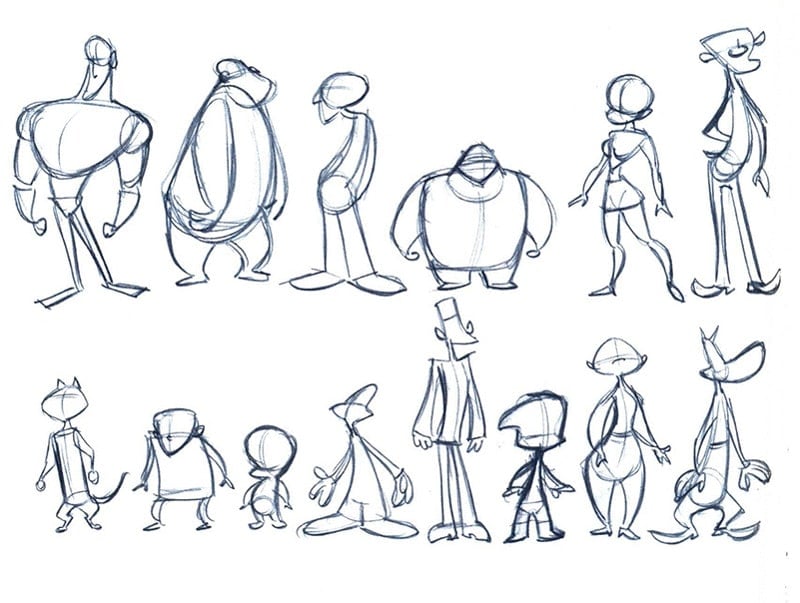
Source: Pinterest
It's considered a traditional animation style, known from the 1800s. Initially, it was created by pulling together the frames in which one drawing was followed by another one that slightly differed from it. Every second included 24 frames.
We all remember the classic Disney animations, right? Snow White and the Seven Dwarfs, Bambi, The Little Mermaid, and so on. They are some of the most popular 2D animations.
With the development of computer technologies, this process was also digitized through various 2D animation software with the option of drawing the characters and backgrounds directly into the computer and animating them.
Now, let's learn more about how 2D animation is created. The process consists of 3 main phases: pre-production, production, and post-production. Let's see what's included in each of them.
Pre-Production
The pre-production process is the first stage of creating animations . During this stage, the animation team develops the story and writes the script of the animation, designs the characters, creates a storyboard , chooses the color palettes, prepares the backgrounds, and records the voice-over . This is a preparation stage for the main process, so it needs to be properly done.
A well-written script should imply all the visual actions and storyline. The storyboard is based on the script, so it visually represents the sequence of actions and events by showing how they are organized.
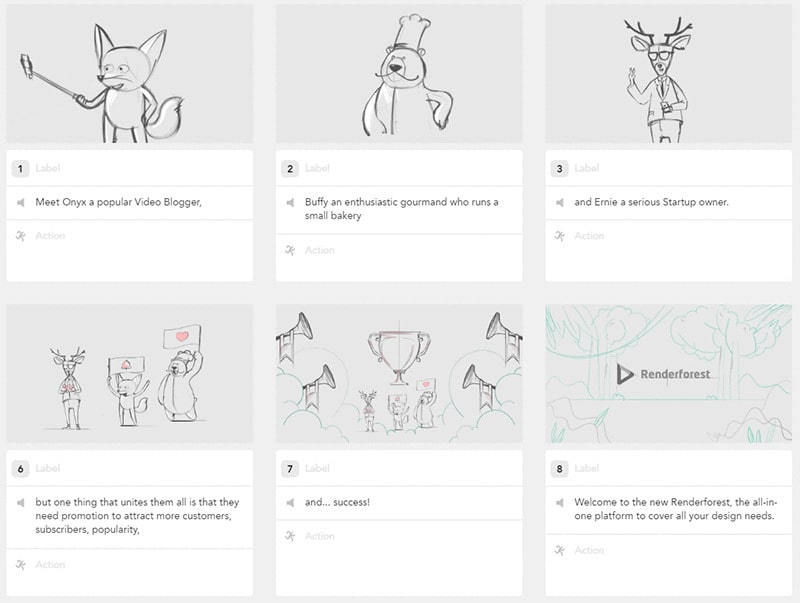
The next step is creating the characters, outlining the backgrounds, and preparing other visual elements of the animation. It starts from simple sketches and develops into detailed designs and images. Then, it's time to decide the color palettes of the animation, including the colors of various objects and lighting.
Another important part of any animation are backgrounds where different actions come to life and the characters perform their activities.
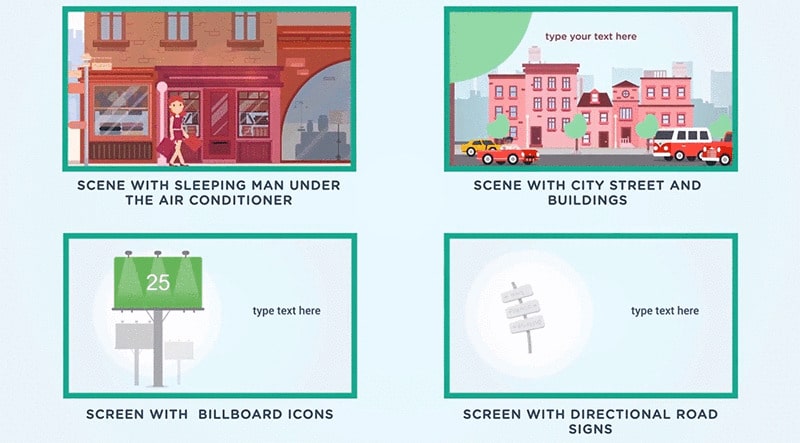
During the pre-production process, the main background layouts are sketched, based on the storyboard. The prepared sketches will be painted during the production process.
Production
Production is the process of creating the animation by gathering all the created materials together and producing the scenes. This includes painting the backgrounds, creating the individual scenes and character activities, making the rough animation, cleaning up the animation (tracing), inbetweening, coloring, and painting the drawings with the help of computer software, compositing, and export.
To pull everything together, animators create an exposure sheet that includes all the instructions on how to make each scene. The exposure sheet is divided into 5 parts:
- Actions and timing
- Dialogues and music
- Animation layers
- Backgrounds
- View perspective
Once the rough 2D animation is created, it needs to be cleaned up and polished. This process is also called tracing and can be done in two ways: in a new layer or directly over the same layer with different colors.
Inbetweening is used to make a smooth animation by adding additional drawings between two frames. For example, if you want to create a bouncing ball scene, you should draw transitional frames between the first scene where the ball is on the top and the second frame where the ball is on the ground.
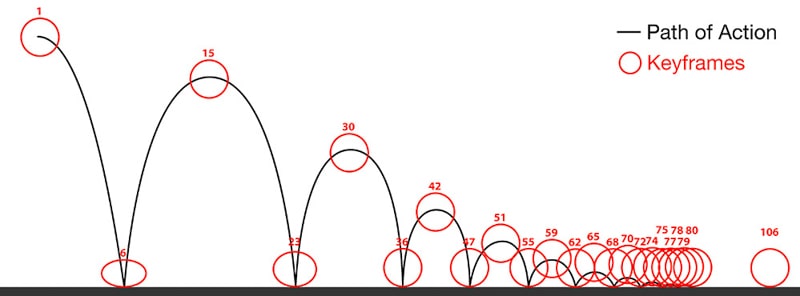
Source: swardson.com
After the frames are fully ready, they are scanned into a computer, if they are not drawn digitally. Then, it's time to combine all the visual elements based on the exposure sheet. During the compositing process, the specialists add the backgrounds, frames, sounds, and any other effects that are required.
This is mostly achieved through different animation software . When the compositing process is over, the animated scenes are rendered as videos or movies.
Post-Production
Post-production is the final editing process of 2D animation. During this phase, the animation is enhanced with additional sound effects or recordings which increase the emotional impact of the animation. Once the final version is ready, it's rendered and exported to different formats.
These were the basics of 2D animation and its creation process that every beginner should know about. To become an advanced animator, you should learn more about the techniques and best practices of making 2D animations.

2D Animation Tips and Tricks
No matter whether it's a 2D animation or any other kind of animation, the purpose of its creators is to make it more realistic and impressive. But how to make the lifeless drawings more real and lively? Disney animators Ollie Johnston and Frank Thomas suggested 12 principles of animation :
- Squash and stretch – give weight and volume to your characters as they move
- Anticipation – let the audience know about a major action that is going to happen
- Staging – express the clear intention of your characters through every pose or action
- Straight ahead action and pose to pose – choose one of the techniques of creating animation: draw the key poses then add the transitional ones, or create every single scene one after another
- Follow through and overlapping action – pay attention to the movements of the characters, as some parts move faster than the others and when the character stops, some of the body parts still keep moving.
- Slow in and slow out – to make the actions more realistic, draw more frames at the beginning and at the end of the action and fewer frames in the middle.
- Arc – add slightly circular motions to the actions of the characters
- Secondary action – to emphasize the main action, use secondary actions that add more liveliness to it
- Timing – adjust the timing of the scenes by making them slower or faster
- Exaggeration – using exaggerations in movements also helps to emphasize some points and ideas
- Solid drawing – even though the characters are drawn in two-dimensional space, they must look like their forms have some weight
- Appeal – make sure to create appealing characters, so that the audience will be interested in watching them
If you follow these classic principles, soon it will be hard to tell your animations from the professional ones. Moreover, search for different tips and tricks to further enhance your skills and create more awesome animations. This will help you develop your own style.

One of the most important tips you need to remember is: plan every detail of your 2D animation. Imagine how you want to present all the scenes and activities, which parts must be emphasized, define the main and secondary actions, develop each character, and make sure to take notes.
Learn how to communicate emotions through facial expressions and body language. To create realistic animation, you need to observe and study the gestures and body movements in detail. Don't be afraid to exaggerate and add extra intensity.
To make sure that you've mastered the skill of creating realistic actions and building relationships between your characters, try to watch your final output without a voice-over. You heard that right. Watch how your characters communicate with each other, how they act, what emotions they show. Are they realistic enough?
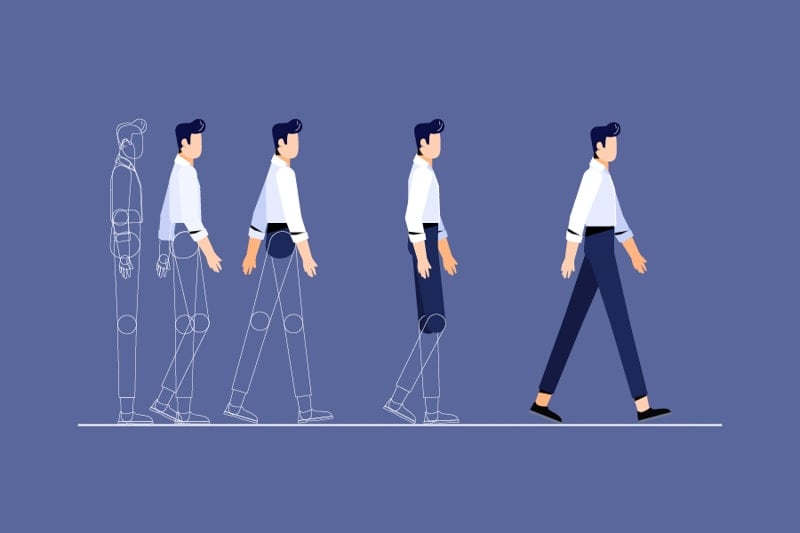
The clean-up phase is considered one of the crucial steps in the 2D animation process. In the previous section, we've presented the 2 ways of the clean-up or tracing. It's a tricky process during which you can lose some important details if you're not careful enough. So, it doesn't matter which option you choose, tracing on a new layer or the same layer, make sure that you keep the original ideas and concepts.
Lastly, pay attention to the whole image of your scenes. You might miss some unimportant details, but you should emphasize the key parts of your animation and make them the center of attention.
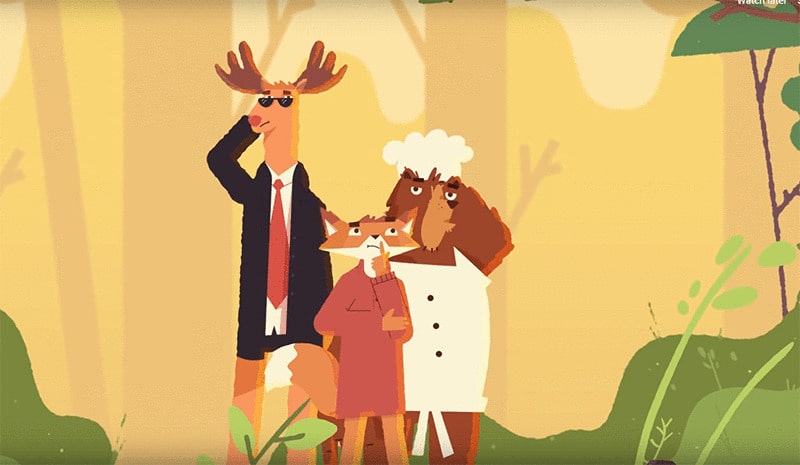
Within time, you'll learn how to use the tips and tricks to take your 2D animation to a whole new level.
Which Software is Best for 2D Animation?
There are so many different 2D animation software out there that it has become very hard to find the most suitable one, especially for beginners. And that number keeps growing. The one thing that you can be sure about is that you will definitely find one based on your skills and budget.
As you might have already guessed from the previous statement, there are 2 main criteria for choosing animation software: skills and budget. Most of the paid 2D animation software provides free trials, so you can try before buying or subscribing to a plan.
Check out some of the best 2D animation software below:
You can start by trying the free tools like Pencil 2D, Synfig Studio, Creatoon, Toon Boom, Blender, etc. If you can't find any suitable 2D animation software , you can try online tools, which are easy to use and don't require design skills or technical knowledge.
Create 2D Animation Online
In the previous sections, we've introduced the whole process of creating 2D animations. It seems so complicated and time-consuming. Besides, only a professional team can handle all the processes and get a professional outcome. So, if you don't have a team or don't want to hire them, it's better to find alternatives.
The good news is you don't need to have professional skills to create an animation.
How? If you're not a professional animator, you can use online animation maker tools that provide ready-made animated templates. It will take time to learn how to use different 2D animation software. So, if you're not planning to become an animator, you can simply use online tools.
Another good news is that you can automate that process. Yes, you heard that right. With Renderforest, you can get an animated video in a couple of minutes. Choose a template , add your script and get your auto-generated animation.

Write a script with up to 2048 characters. You can further customize your video, if necessary.
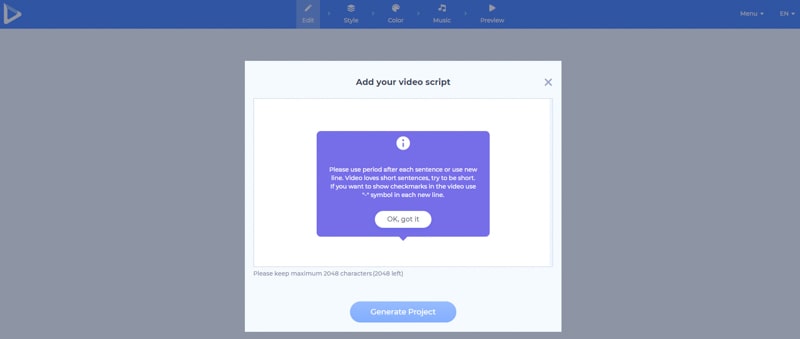
Besides the automated video creation, you have 2 more options: adding the scenes manually and using ready-made video presets. Pick various scenes from character animations to background animations based on your story and script and pull them together to get an amazing animated video.
Choose one of the options based on your project requirements. Making 2D animations online not only saves you time but also helps to cut production costs. So, next time when you think about making videos, also consider using online video makers.
Try now with our customizable video templates to see how effortless it is to create a video online:
Explainer Video Toolkit
Get rid of the boring content and inspiration killers. Amaze your audience and create a fascinating video with the help of our super-functional Explainer Video Toolkit. More than 200 interactive scenes, including characters, various items, kinetic typography, video and photo holders and more. It's the largest directory of astonishing animations from various fields, breathtaking music library and up to 30 minutes of a successful project initiative.
Create My Video
Whiteboard Animation Toolkit
The Whiteboard Animation Toolkit is here to provide a different approach to video marketing. With more than 450 interactive scenes, animated characters, featuring design and icons, you no longer need to struggle to have a creative video. Simply, build your story and turn it into an amazing video.
Create My Video
Explainer World Toolkit
You've decided to make an animated explainer video to tell your business story in an engaging way, increase conversions, maximize your business exposure and boost sales? Then it's time to think about the world's best explainer – the Explainer World Toolkit. A wide range of possibilities with more than 200 icons, characters and animated scenes from different fields combined in one template. Available in 3 different styles with more than 5 dynamic transitions, this super-functional template is a real innovation in the aspect of design.
Create My Video
Kids Promo Toolkit
Explain or promote kids featuring product or service with the Kids Promo Toolkit. Trendy summer design, about 150 colorful scenes with 5 creative transitions are at your use to create your wonderful videos. Perfect for children cafe promotion, service, and product presentations, kids celebrations, kindergarteners or elementary schools videos, children photo galleries and many more.
Create My Video
Conclusion
2d animation is everywhere: on the screens of our TVs, on the internet, in the cinemas, even on the billboards on the streets. Somehow, we constantly interact with it by watching or creating them. In this article, we've discussed the basics of creating 2D animations both for beginners and for those who want to create animated videos for their business.
If you're trying to create animations yourself, follow the 12 classic principles of animation and useful tips and tricks that will help you develop your own style. Choose 2D animation software and start creating.
Another option for creating 2D animations is using online video maker tools that offer ready-made animated templates. Prepare your script, choose the right template and create your animation in a couple of minutes.
You can try it right now!
Try Now
How To Create 2d Animation Video
Source: https://www.renderforest.com/blog/2d-animation
Posted by: sullivanwouniend1968.blogspot.com

0 Response to "How To Create 2d Animation Video"
Post a Comment